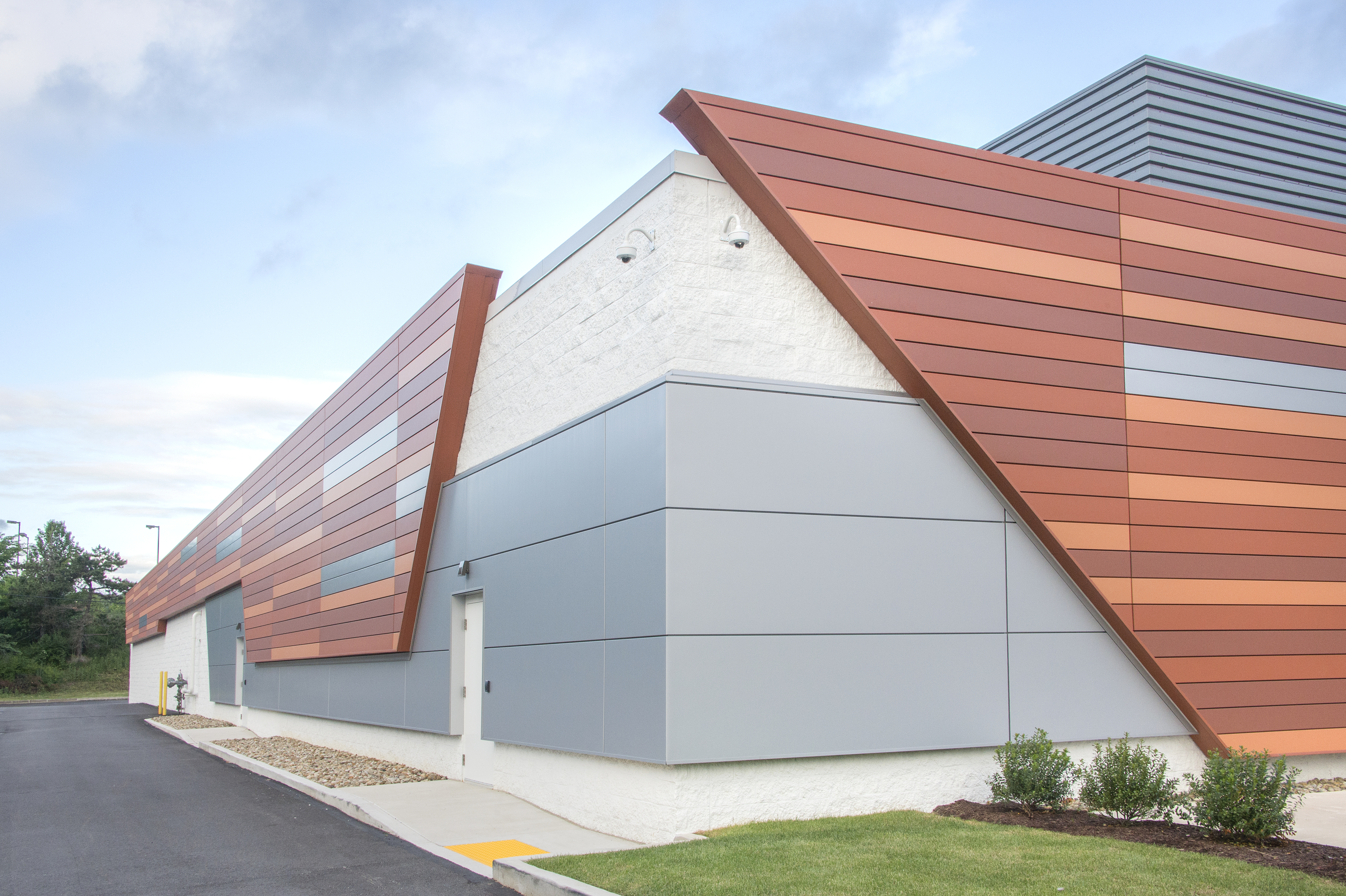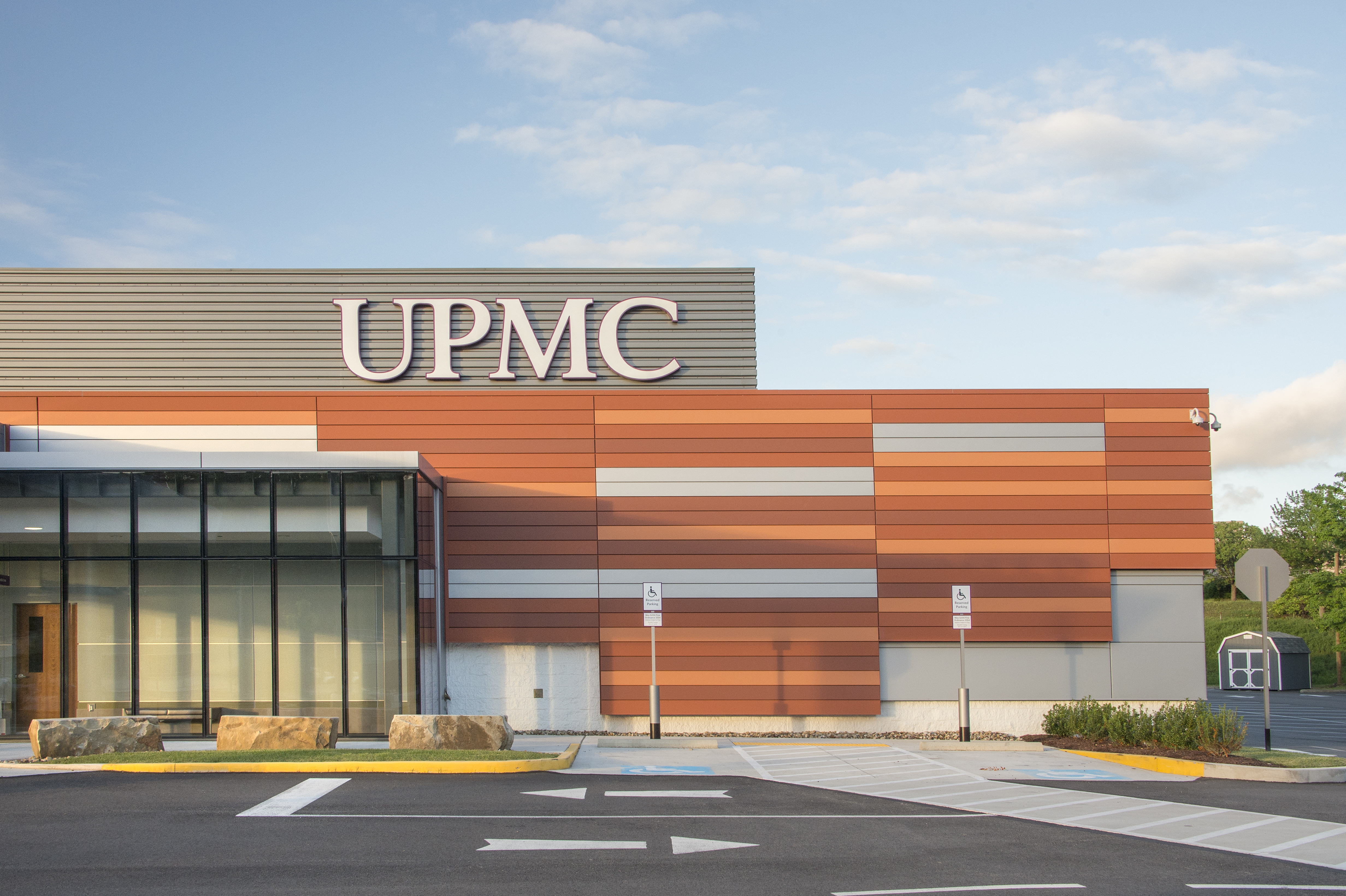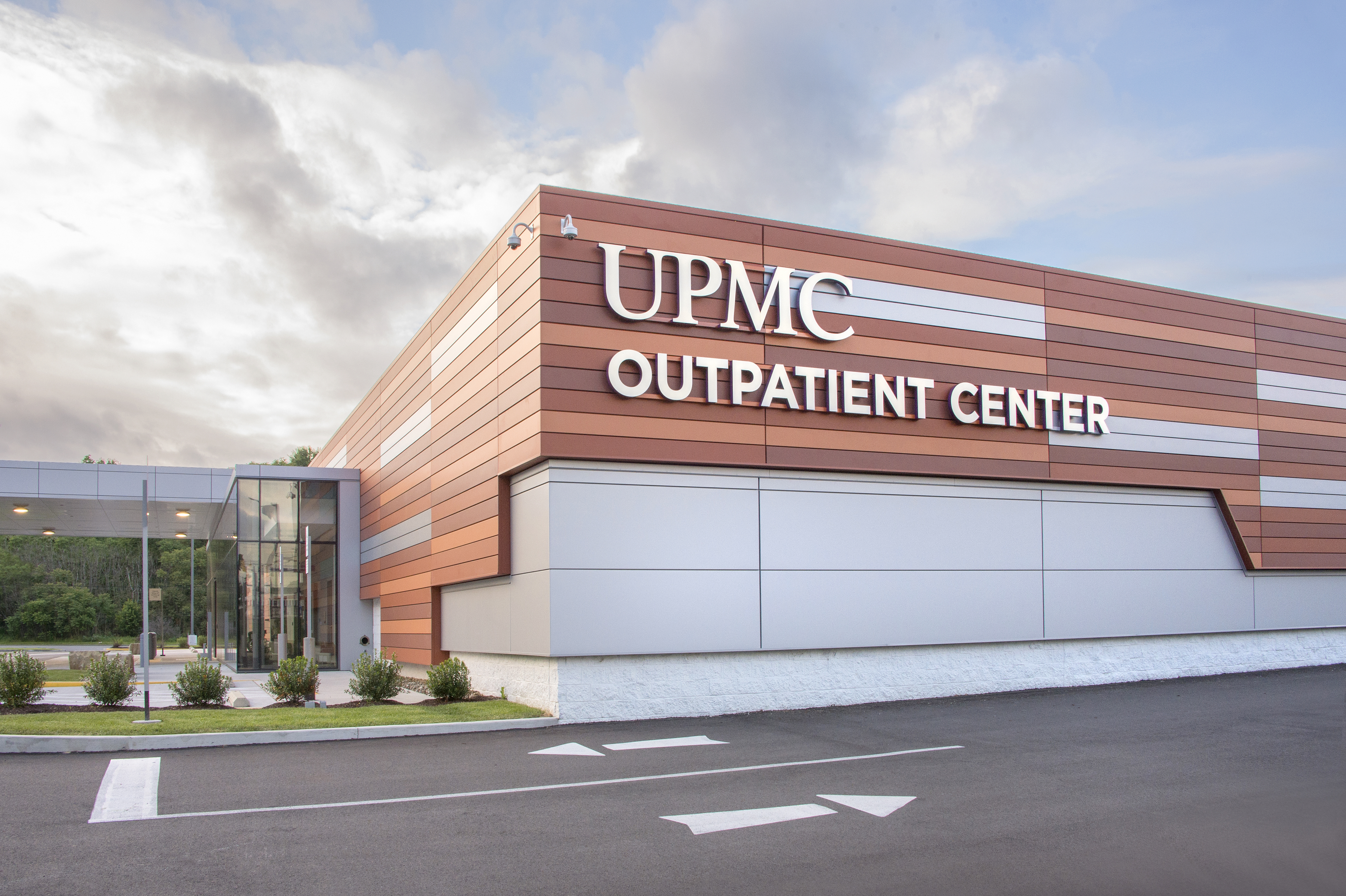The new 46,000-square-foot, state-of-the-art University of Pittsburgh Medical Center (UPMC) Outpatient Center in West Mifflin, Pennsylvania, is already living up to its mission of providing residents of Pittsburgh’s South Hills with convenient access to medical and surgical care, all under one roof. The facility boasts ample free parking, imaging services, office space for more than 20 specialties, and an outpatient surgery center. Additionally, the building will be LEED certified.
The existing structure was an old Toys “R” Us location that had been abandoned after the national chain filed for bankruptcy and shuttered its stores across the country. Although situated in a high- density commercial zone in Pittsburgh, not far from the now-defunct Century III Mall and other abandoned retails stores, the UPMC developers had a vision … give back to the community by converting this blighted, cinderblock retail space into a beautiful, environmentally sound medical facility, bringing patient care right to the heart of the community.
To realize this aesthetic transformation, project architect Stantec looked to CENTRIA’s Formawall Dimension Series (FWDS) insulated wall panels (2” thick, 22-gauge) in an array of warm, earthy colors—Silver, Sedona, Clay, and Sienna—to provide the high-performance, modern aesthetic that would reinforce the brand of the health system.
Jim Routh, Principal at Stantec, explains the genesis of the transformation. He says, “UPMC challenged us to reimagine this windowless one-story retail facility into an airy, light-filled outpatient care center for their patients. The bold terra cotta colors of the exterior design draw attention to the re-imagined façades and announces UPMC’s investment into the surrounding community. Glass elements are strategically cut into the CENTRIA panels, providing natural daylight to the central patient area. The new façade has an almost billboard-like quality.”
The solution: Recladding the building without having to tear down any exterior walls. Routh explains, “I immediately thought of the CENTRIA panels. While the first consideration was definitely an aesthetic decision for UPMC marketing/branding and ease of wayfinding for patients, the cost savings and performance of the FWDS panels were also high priorities, making these panels an obvious choice for the recladding approach.”

Routh notes that it was a fairly easy and quick installation. The entire project was a nine-month construction project, but the installation of the metal panels took approximately eight weeks total, allowing the contractor to concentrate on the more complicated components of the facility. “The contractor attached a simple, steel sub-girt system directly to the existing concrete block walls, and then installed the CENTRIA panels directly onto these sub-girts without the need for structural sheathing,” says Routh.
Benjamin Marnik, CENTRIA district sales manager, shares how the FWDS panels were the perfect answer to meet the project goals. He says, “The Formawall Dimension Series not only provided the aesthetic appearance that they required, but also provided the performance that they were looking for, which was the added insulation for the building exterior. There are a lot of products in the industry that provide one or the other, but rarely provide both, and that's something that is achieved with this particular product.”
Routh adds, “Not only is the performance of the CENTRIA panels exceptional, but Ben’s customer service and knowledge of the product is second to none. Ben and I have been working together for over a decade, and I consider him to be a valuable design partner.”
As for the color palette, notes Routh, “UPMC is transforming patient care throughout the Pittsburgh region and beyond. They were looking for an aesthetic that supported their forward-looking vision. The modern appearance of the multicolor metal panels seemed to resonate with them.”

Marnik adds, “From a material standpoint, interestingly, the panels provide the impression of terra cotta, accomplished with CENTRIA's Allura Terra Cotta Series, which adds a matte finish with a subtle texture to match the color and texture of terra cotta. The finish itself contains a very mild aggregate, which allows for a finish with a much less reflective quality than you would have with a typical painted metal material, giving it more of that earthy feel. That’s one of the unique characteristics of the material used on the project.”
Additionally, the use of the CENTRIA insulated metal panels helped achieve energy performance requirements. Stantec was able to achieve required insulation values in the exterior walls as well as the roof, where CENTRIA exposed fastener panels (BR5-36) were used at the rooftop mechanical screen wall.
The facility, which had the extra challenge of being constructed mainly during the COVID-19 pandemic, opened on time in December 2020, thanks in part to the speed and ease of installation provided by the CENTRIA product line. Today, it is successfully up and running, meeting the health care needs of the local community.
Project Details
Project Name: UPMC Outpatient Center
Location: West Mifflin, PA
Architect: Stantec
Construction Manager: Rycon Construction, Inc.
Metal Panel Installer: A.C. Dellovade, Inc.
CENTRIA Products:
BR5-36 Exposed Fastening Panels- Medium Gray, 2943 sq. ft. 18 gauge
FWDS, 2” thick, 22 gauge, Silver, 2,548 sq. ft.
FWDS, 2” thick, 22 gauge, Sedona, 1,380 sq. ft.
FWDS, 2” thick, 22 gauge, Clay, 2,564 sq. ft.
FWDS, 2” thick, 22 gauge, Sienna, 1,936 sq. ft.
Related Stories
| Aug 11, 2010
AAMA leads development of BIM standard for fenestration products
The American Architectural Manufacturers Association’s newly formed BIM Task Group met during the AAMA National Fall Conference to discuss the need for an BIM standard for nonresidential fenestration products.
| Aug 11, 2010
9 rooftop photovoltaic installation tips
The popularity of rooftop photovoltaic (PV) panels has exploded during the past decade as Building Teams look to maximize building energy efficiency, implement renewable energy measures, and achieve green building certification for their projects. However, installing rooftop PV systems—rack-mounted, roof-bearing, or fully integrated systems—requires careful consideration to avoid damaging the roof system.
| Aug 11, 2010
Pella introduces BIM models for windows and doors
Pella Corporation now offers three-dimensional (3D) window and door models for use in Building Information Modeling (BIM) projects by architects, designers, and others looking for aesthetically correct, easy-to-use, data-rich 3D drawings.
| Aug 11, 2010
AAMA developing product-based green certification program for fenestration
The American Architectural Manufacturers Association is working on a product-based green certification program for residential and commercial fenestration, the organization announced today. AAMA will use the results of a recent green building survey to help shape the program. Among the survey's findings: 77% of respondents reported a green certification program for fenestration would benefit the product selection process for their company.
| Aug 11, 2010
Seven tips for specifying and designing with insulated metal wall panels
Insulated metal panels, or IMPs, have been a popular exterior wall cladding choice for more than 30 years. These sandwich panels are composed of liquid insulating foam, such as polyurethane, injected between two aluminum or steel metal face panels to form a solid, monolithic unit. The result is a lightweight, highly insulated (R-14 to R-30, depending on the thickness of the panel) exterior clad...
| Aug 11, 2010
AIA Course: Enclosure strategies for better buildings
Sustainability and energy efficiency depend not only on the overall design but also on the building's enclosure system. Whether it's via better air-infiltration control, thermal insulation, and moisture control, or more advanced strategies such as active façades with automated shading and venting or novel enclosure types such as double walls, Building Teams are delivering more efficient, better performing, and healthier building enclosures.






